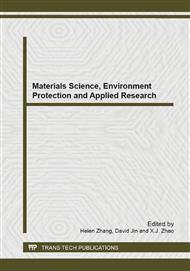p.493
p.499
p.503
p.509
p.513
p.517
p.521
p.526
p.531
Research on Applied Technology in Experiments with Three Boosting Algorithms
Abstract:
Boosting algorithms are a means of building a strong ensemble classifier by aggregating a sequence of weak hypotheses. An ensemble consists of a set of independently trained classifiers whose predictions are combined when classifying novel instances. Previous research has shown that an ensemble as a whole is often more accurate than any of the single classifiers in the ensemble. In this paper we use applied technology to built an ensemble using a voting methodology of Boosting-BAN and Boosting-MultiTAN ensembles with 10 sub-classifiers in each one. We performed a comparison with Boosting-BAN and Boosting-MultiTAN ensembles with 25 sub-classifiers on standard benchmark datasets and the proposed technique was the most accurate. These results argue that boosting algorithms deserve more attention in machine learning and data mining communities.
Info:
Periodical:
Pages:
513-516
Citation:
Online since:
March 2014
Authors:
Price:
Сopyright:
© 2014 Trans Tech Publications Ltd. All Rights Reserved
Share:
Citation:


